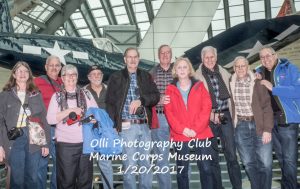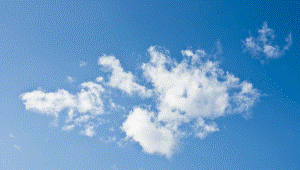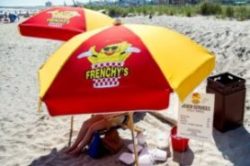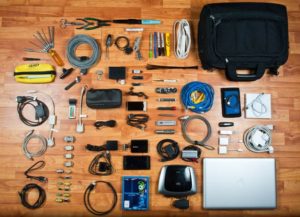Overview • Galleries (See Galleries) • Monthly Themes • Field Trips • Speakers • Projects


Field Trips are on the 3rd Friday of each month. We usually carpool from the Tallwood parking lot at 9:00 am, or meet at the designated location at 10:00 am. Field trip destinations are announced at club meetings and by email to members.
For more information, or to suggest future field trip destinations, email Lynn Cline or call her at (c) 703-789-6930.
September 16 Field Trip -- National Zoo
OPTION 1: FREE ENTRY PASS (WALKING INTO THE ZOO)
- If you walk, bike, taxi or take public transportation, you need an entry pass for each person in your group.
- Limit six passes per reservation
- Access the Zoo via the Connecticut Avenue or Harvard Street Bridge entrances.
NOTE: If you choose a Paid Parking Pass (option 2), you do not need entry passes for your group.
OPTION 2: PAID PARKING PASS (PARKING AT THE ZOO)
- If you drive and park at the Zoo, your Paid Parking Pass covers entry for everyone in your personal vehicle. You do not need to reserve free entry passes for your group.
- $30 per car
- One pass per car, covers all occupants
- All cars must enter the Zoo at the Connecticut Avenue entrance (3001 Connecticut Ave, NW).
Note: Lynn Cline has a zoo membership and can reserve free parking and entry for one car and its passengers.
Carpool departure time from Tallwood is 7:00 so we may arrive when the zoo opens and the animals are most active for the public.
Field Trip Schedule for 2022
.
| January 21 | No Field Trip due to Pandemic |
| February 18 | National Cathedral |
| March 18 | Tidal Basin/Cherry Blossoms (was George Mason Gunston Hall and Grounds) |
| April 15 | Sully Plantation
Address:
3560 Historic Sully Way
Chantilly, VA
Description:
Sully reflects Fairfax County history. It was the 1794 home of Richard Bland Lee, Northern Virginia's first Representative to Congress and General Robert E. Lee's uncle. Sully is on the National Register for Historic Places, is accredited by the American Association of Museums and is part of the National Park Service’s Underground Railroad Network to Freedom.
Hours: The grounds are open 9am - 5pm
The Visitor Center and Gift Shop are open 11am - 3pm.
Tours:
There are House Tours available for a fee ($8 for seniors) but they are only available at 11am, 1pm and 3pm Thursday through Sunday.
There is a Forgotten Road Tour of all the outbuildings and slave quarter areas at 2pm, which is also $8 for seniors.
The tours are 45 minutes long.
You can buy tickets online here:
While a permit is required for commercial photography, for our visit, there are no restrictions on photography, whether on the grounds or in the house.
|
| May 20 | Brookside Gardens (alt. Meadowlark Gardens) |
| June 17 | Franciscan Monastery |
| July 15 | Kenilworth Gardens (alt. Neabsco Creek Boardwalk) |
| August 19 | NOTE: Due to the hot weather, we will be going to the Marine Corps Museum rather than to Huntley Meadows
National Marine Corps Museum
Address:
1775 Semper Fidelis Way
Triangle, Virginia Hours: 9:00 - 5:00 Fees: Free admission and parking As a rule, bringing food and drink is prohibited, however, visitors may bring unopened, clear water bottles no larger than 20 oz. Museum Photography Policy The National Museum of the Marine Corps encourages you to take photographs and video during your visit. Flash photography is NOT allowed in the vicinity of the Iwo Jima flag, and signage is posted accordingly. The Museum reserves the right to prohibit flash photography in other areas as needed to ensure that fragile objects are protected. Using your camera's flash in crowded areas may disturb others. Please respect your fellow Museum visitors. Photographers using tripods or similar devices should be respectful of others. On busy days, the Museum may restrict use of such devices to ensure visitor safety and the flow of foot traffic throughout the galleries. If you would like to carpool from the OLLI Tallwood campus, send an e-mail to Lynn Cline at [email protected] so we have a head count. Meet up time is 9:00 am.
|
| September 16 | National Zoo
Address:
3001 Connecticut Ave. NW
Washington, DC
Hours: 8:00 - 6:00
Animals are most active early in the morning, therefore it is recommended to arrive when the zoo opens at 8:00am. Passes are required. They are free (except for parking) and are for the day, not a specific time. Passes can be obtained online at:
OPTION 1: FREE ENTRY PASS (WALKING INTO THE ZOO)
NOTE: If you choose a Paid Parking Pass (option 2), you do not need entry passes for your group. OPTION 2: PAID PARKING PASS (PARKING AT THE ZOO)
Note: Lynn Cline has a zoo membership and can reserve free parking and entry for one car and its passengers. Carpool departure time from Tallwood is 7:00 so we may arrive when the zoo opens and the animals are most active for the public. E-mail Lynn at [email protected] if you want to carpool.
|
| October 21 | Great Falls |
| November 18 | Library of Congress |
| December 16 | African American Museum |
Field Trip Schedule for 2021
.
| January | Past Vacations or Field Trips |
| February | (Field Trip on Hiatus) |
| March | Local Lakes and Ponds |
| April | Meadowlark and National Arboreteum |
| May | Neabsco Regional Park |
| June | Habitat, the Smithsonian Gardens Outdoor Exhibition This exhibit has gardens at locations around the National Mall. Each location has a theme with plants and information, and there are also some sculptures. For details on the locations and themes, as well as a map you can print out, click here: https://gardens.si.edu/exhibitions/habitat/National Native American Veterans Memorial The National Native American Veterans Memorial opened November 11, 2020. It is on the grounds of the National Native American Indian Museum. Here is a description from the Smithsonian website: An elevated stainless-steel circle balanced on an intricately carved stone drum, the memorial is simple and powerful, timeless and inclusive. The design incorporates water for sacred ceremonies, benches for gathering and reflection, and four lances where veterans, family members, tribal leaders, and others can tie cloths for prayers and healing. For more information, click here: https://americanindian.si.edu/visit/washington/nnavm#nnavm-faqsEisenhower Memorial The other new memorial is the Eisenhower Memorial, which opened in September 2020, located just across the street from the Air & Space Museum, at 540 Independence Avenue, SW. This Memorial is open 24 hours a day. Reports indicate it is especially nice to photograph at night since it is beautifully lit, should you choose to make more than one trip to town. More information is available here: https://www.nps.gov/ddem/planyourvisit/basicinfo.htm |
| July | Lotus and Lilies at Kenilworth Aquatic Gardens
1550 Anacostia Ave. NE According to the website, the lotus flowers are popping up all around the park and are currently at 38% bloom. The lilies are out in force. Also, 7 great blue herons, 4 great egrets and 1 green heron were spotted from the boardwalk on June 30. The park is open 8:00 - 4:00 daily. The lotus and lily festival runs July 9 - July 31, and during this time the park is open until 8:00pm on Fridays.
Sunflowers (two options) This year it seems to be less than optimal but for those who wish to try it, here are options. Option 1: McKee-Beshers Wildlife Management Area Directions: From the Capital Beltway, take Exit 39 (River Road) west toward Potomac. Proceed for approximately 11 miles to the intersection of River Road and MD 112, Seneca Road. Turn left and continue on River Road for about 2 1/2 miles. McKee-Beshers will be on your left as you head west on River Road. Apparently one of the fields has been planted with something other than sunflowers this year, and the sunflowers are currently at an early stage. Following is a link to their website with more details and a map which shows the location of the sunflower fields. https://dnr.maryland.gov/wildlife/Pages/publiclands/central/sunflowers.aspx Option 2: Burnside Farms Nokesville farm - 11008 Kettle Run Rd., Nokesville, VA 20181 https://www.burnsidefarms.com As mentioned in one of our meetings, another option for sunflowers is Burnside Farms. The website currently has only preliminary information and the farm is closed until mid-July. When they reopen, they will have fields of sunflowers. You must purchase a ticket online and the prices are not yet posted. Unlike McKee-Beshers, which is a wildlife sanctuary, this is intended for family fun, so it is a very different type of photo opportunity. Logistics from their website: The farm does not allow reflectors, flash boxes, tripods, props or any other equipment that may get in the way of other guests enjoying their visit. We reserve the right to ask you to not use these devices if we see them in use. Regular hours are different each season and hours are dependent on how many daylight hours we have. New for 2021, we will offer limited early bird and evening ticket options (those tickets will be posted to our ticket page when they become available).
|
| August 20 |
National Museum of the United States Army 1775 Liberty Drive, Fort Belvoir, VA 22060NMUSA WebsiteFree Timed Tickets and Directions |
| September | Hillwood Estate, Museum and Gardens
4155 Linnean Avenue, NW Washington, DC 20008 Current Exhibition: Rich Soils There is a unique opportunity to see an exhibit in the gardens during this visit. Contemporary American artist Kristine Mays's life-size, three-dimensional dancing wire sculptures will emerge throughout the gardens for the special exhibition Rich Soil, on view from June 26, 2021 through January 9, 2022. Mays breathes life into wire, transforming an industrial product into fascinating and moving works of art. Springing to life throughout the 13 acres of formal gardens, 29 sculptures will surprise visitors as they dance throughout the garden beds, bursting forth from the plant life. "My hope is that the figures will spring forth like spirits rising from the soil, to be recognized, revered and embraced," Mays has explained. "May they push through while at the same time mingling and dancing among the flowers. Both plant and human beings come and go—reverberating within the cycles of life.” Hillwood Website
|
| October | Capture Fall Colors
Choose your favorite photo spot: Great Falls, Harper's Ferry, Skyline Drive, pumpkin fields, or your own neighborhood. Any location is fair game for sharing your photos and experiences for this theme. We'll discuss your photos at the OPC Zoom meeting October 22nd at noon.
|
| November | |
| December |
Field Trip Schedule for 2020
.
| January 17 | Museum of Women in the Arts 1250 New York Ave, NW, Washington, DC Opportunity to photograph Masonic building architecture, the art collection, and to see a special photography exhibit called “Live Dangerously.” . |
| February 21 | Smithsonian Natural History Museum 10th and Constitution Ave, NW, Washington, DC . |
| March 20 | 401 F Street, NW The Virtual Field Trip to the NBMWelcome to the OLLI Photo Club's virtual field trip to the National Building Museum. The link above will open a YouTube video of a slide presentation given in the OLLI 2018 course, F106 Virtual Museum Tour. Slides advance every 10 seconds. Pressing the space bar will pause and restart the video. Moving the timeline cursor along the bottom of the video will position to different slides. Enjoy!. |
| April 17 | . |
| April 24 |
WIFT - Celebrations . |
| May 1 |
View from 22nd floor of John Hoover’s Reston building is a 360 degree look including DULLES AIRPORT, EAST & NORTH TO MARYLAND, WEST, TYSONS CORNER, MOUNTAINS, ETC. . .WIFT - Trails and Sidewalks . |
| May 15 | . .WIFT - Abstracts and Pets . |
| May 22 | WIFT - Photos of Unusual Perspective . |
| May 29 | WIFT - Landscapes: Home and Neighborhood . |
| June 19 |
Green Springs Gardens
|
| July 3 | . |
| July 17 | . . |
| August |
. 7121 East Boulevard Drive in Alexandria River Farm is the home of the American Horticultural Society, with extensive gardens along the Potomac River. . . |
| September 18 |
Occoquan Regional Park 9751 Ox Road Trails along the river, Turning Point Plaza honoring women suffragists. Options to combine this with a visit to the nearby Workhouse Arts Center or the town of Occoquan. . |
| October 16 | Theodore Roosevelt Island Off of Northbound Memorial Parkway near Key Bridge Park with trails, views of the Potomac River. Option of bridge photos. . |
| November 20 |
. . |
| December 18 |
US Botanical Garden Special Christmas display at this time. . |
Schedule subject to change per weather, member’s preferences and suggestions.
- - - - - - - - - - - - - - - - - - - - - - - - - - - - - - - - - - - - - - - - - - - - - - - - - - - - - - -
Field Trip Schedule for 2019
| January 18 | Mazda Product Shoot |
| February 15 | Sackler Gallery |
| March 15/29 | US Botanic Garden / Tidal Basin |
| April 19 | National Gallery of Art |
| May 17 | Union Market |
| June 21 | Adams Morgan |
| July 19 | Udvar-Hazy Center (replaces Kenilworth) |
| August 16 | Hillwood Gardens inc Eisenstaedt Photos |
| September 20 | Huntley Meadows |
| October 18 | Middleburg/Upperville |
| November 15 | African American Museum |
| December 20 | Washington National Cathedral |
Schedule subject to change per weather, member’s preferences and suggestions.
- - - - - - - - - - - - - - - - - - - - - - - - - - - - - - - - - - - - - - - - - - - - - - - - - - - - - - -
Field Trip Schedule for 2018
| January 19 | National Air and Space Museum, DC |
| February 16 | American Art & Portraiture Museum |
| March 16 | Old Post Office and Smithsonian Natural History Museum with Nature's Best Photography Exhibit - Adams/Morgan (Cancelled due to weather) |
| April 20 | Meadowlarks Gardens |
| May 18 | Rock Creek Church & Cemetery (Cancelled, Rain) |
| May 25 |
Workhouse Art Center (Makeup Field Trip) |
| June 15 | Sackler/Freer Galleries and adjacent facilities: the African Art Museum, the S. Dillon Ripley Center, the Smithsonian Castle, and the Haupt Gardens. |
| July 20 | Kenilworth Gardens |
| August 17 | Renwick-the Art of Burning Man |
| September 21 | Alexandria |
| October 19 | Purcellville and local vineyard |
| November 16 | Library of Congress (cancelled). Make-up destination: The Wharf on December 12 |
| December 21 | Washington National Cathedral (Date corrected). Special event in WNC, destination changed to Freer. |
Schedule subject to change per weather, member’s preferences and suggestions
- - - - - - - - - - - - - - - - - - - - - - - - - - - - - - - - - - - - - - - - - - - - - - - - - - - - - - -
Field Trip Schedule for 2017
March 17 St. Nicholas Russian Orthodox Cathedral
April 21 Meadowlark Botanical Gardens
May 19 National Zoo
June 16 Yards Park (Nationals) and Blind Whino Church
July 21 Kenilworth Gardens
August 18 Museum of Natural History
September 15 Georgetown Waterfront
October 20 Freer and Sackler Galleries
Novembe 17 Holocaust Museum
December 15 National Museum of African American History and Culture
Schedule subject to change per weather, member’s preferences and suggestions
Additional Friday venues: Alexandria and Occoquan
Additional Possibilities: Folklife Festival (June 29-July 4 and July 6-9), Summit Point Racetrack (day trip – approximately 40 minutes from Dulles Airport), Scales and Tails (Cunningham Falls State Park, MD)
Overview • Galleries (See Galleries) • Monthly Themes • Field Trips • Speakers • Projects





